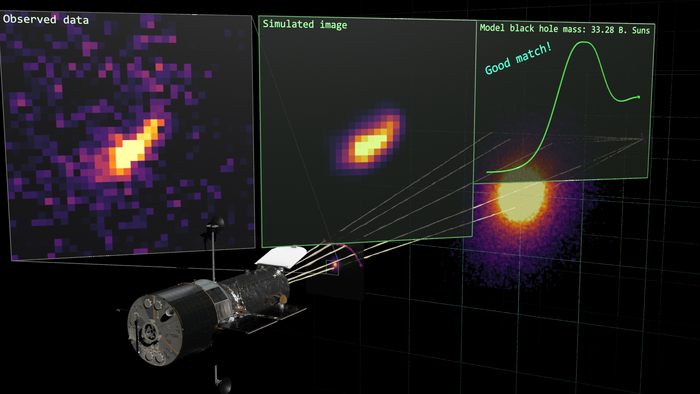
Screenshot of a video about the ultramassive black hole with images captured by the Hubble Space Telescope. /Durham University
Screenshot of a video about the ultramassive black hole with images captured by the Hubble Space Telescope. /Durham University
Scientists have detected an ultramassive black hole around 33 billion times the mass of the Sun – one of the biggest ever found.
The team published their findings in the journal Monthly Notices of the Royal Astronomical Society on March 29.
They used supercomputer simulations at Durham University in the UK and images captured by the Hubble Space Telescope to confirm the size of the black hole, also the first found using gravitational lensing.
Ultramassive black holes, which size between 10 billion and 40 billion times the mass of the Sun, are the most massive objects in the universe. They are rare and elusive, with unclear origins.
These black holes can be found at the center of all large galaxies, such as the Milky Way, according to astronomers, some of whom believe they were formed from the extreme merger of massive galaxies billions of years ago when the universe was still young.
"Most of the biggest black holes that we know about are in an active state, where matter pulled in close to the black hole heats up and releases energy in the form of light, X-rays and other radiation," The Independent reported citing James Nightingale, one of the scientists in the team.
"However, gravitational lensing makes it possible to study inactive black holes, something not currently possible in distant galaxies....This approach could let us detect many more black holes beyond our local universe and reveal how these exotic objects evolved further back in cosmic time," he explained.
The work opened up the "tantalizing possibility" that astronomers can discover more ultramassive black holes than previously thought, the scientists said.